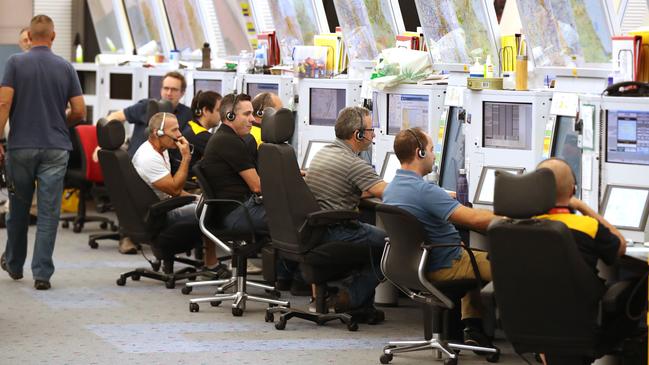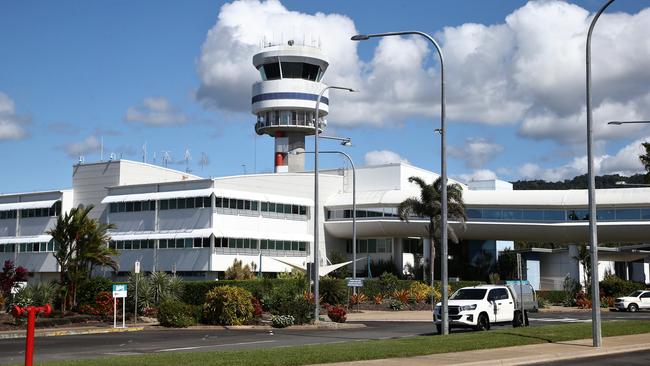Air traffic control towers left empty by staff shortages
Air traffic controllers are regularly being forced to close airspace to aircraft because there is no one available to staff towers.

Business
Don't miss out on the headlines from Business. Followed categories will be added to My News.
Air traffic controllers are regularly being forced to close airspace to aircraft because there is no one available to staff towers due to Covid infections and a high take-up of early retirement packages during the pandemic.
Since February, there have been 127 instances of airspace and air traffic tower closures around the country, compared to 107 for the whole of 2021.
Areas hardest hit by the closures included Rockhampton to Mackay, the Sunshine Coast, Ballina, Byron Bay, Tamworth, Cairns, Coffs Harbour, Gwydir and Jandakot near Perth.
Data shared with The Australian showed some of the closures were flood-related but staff availability was the dominant reason.
Peter McGuane, the executive secretary of air traffic controllers’ union Civil Air, said aircraft could still operate through “closed” airspace, but there was no positive separation service provided.
“It becomes the responsibility of the flight crews to monitor and broadcast their position so then it’s a question of whether the individual operators or airlines are prepared to transit or fly through that airspace,” he said. “It would be a matter of company policy for the individual operators and the majority of those would certainly choose not to transit that airspace for safety reasons.”
The absence of air traffic control services was recently identified by the Australian Transport Safety Bureau as a factor in a mid-air crash over Mangalore in Victoria that killed four people in February 2020.
No air traffic control separation was also found to have contributed to a near collision at Ballina-Byron Airport, involving a Jetstar A320 and a Jabiru.

Mr McGuane said the higher rate of airspace and air tower closures were due to staff shortages stemming not only from the Covid-19 pandemic but the extensive take-up of a generous early retirement package offered to air traffic controllers last year.
Just over 10 per cent of the workforce, or 130 air traffic controllers aged 56 and over had accepted packages worth between $300,000 and $400,000.
“While we’re pleased that large numbers of our members were able to maximise their exit from the organisation after long careers there is ongoing concern about the ability to manage staff shortages in those circumstances,” said Mr McGuane.
As a result, some controllers who had applied for and been granted transfers to other parts of the country had been told they would have to stay put possibly for years, as Airservices struggled to juggle scarce human resources.
Mr McGuane said this was adding to the stress for members already facing an increased workload due to the ramp up of air travel in recent weeks. “It does have an impact on a person’s wellbeing,” he said. “You’ve not only got your work environment to deal with but the external factors and the question of work-life balance and it’s creating a tremendous amount of uncertainty and stress for people.”
In one week last month, the Brisbane-based air traffic control group handling incoming flights, clocked 67 hours of overtime due to understaffing, and the unavailability of reserve staff.
The situation had prompted controllers to question Airservices’ plan to return to its full pre-pandemic workforce by 2025 in line with forecast airline capacity.
“It’s a situation where we’ll be closely monitoring all those factors to ensure adequate numbers are achieved and maintained,” said Mr McGuane.
An Airservices Australia spokeswoman acknowledged the higher than normal level of airspace closures occurring around the country, saying the organisation “like most other companies had been impacted by Covid-19”.
“We have had resilience and staffing measures in place for some time to ensure continued delivery of our services, and at current and forecast levels of air traffic, we expect to be able to meet demand for our services nationally,” she said.
Originally published as Air traffic control towers left empty by staff shortages



